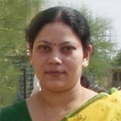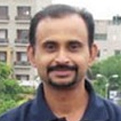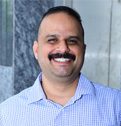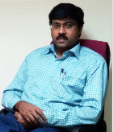Infectious Disease Biology
Group Overview
Infectious disease biology is one of the major mandate of ILS with a vision to work towards human health and welfare focusing on infectious diseases prevalent in India. This core area is being addressed by a group of scientists with varied and complementary expertise, working independently and in collaboration within the group to address key issues of pathogen biology, host-pathogen interaction & disease pathogenesis, immune regulation, inflammation & immunopathology, antibiotic resistance and drug discovery. Insight into pathogen biology, host response, disease onset and progression at molecular and cellular levels is crucial to identify potential drug-targets to enable specific drug-design and development. To address the issues on infectious disease biology in experimental as well as human models, ILS has developed strategic collaboration with neighbouring hospitals for obtaining patient samples and promote interaction with clinicians.
Group Members:
 | Dr. B. RavindranImmunobiology of metazoan parasites |
 | Dr. N. AcharyaGenomic instability and Diseases |
 | Dr. Soma ChattopadhyayMolecular virology |
 | Dr. S. DevadasT cells and the immune response |
 | Dr. T.K. BeuriaDivision in bacteria |
 | Dr. D. VasudevanMacromolecular Crystallography, Biochemistry and Biophysics |
 | Dr. Santosh ChauhanCell biology and Infectious Diseases |
 | Dr. V. Arun NagarajPlasmodium Biology |
 | Dr. Gulam Hussain SyedMolecular Virology, Virus Host Interaction and Disease Pathogenisis |
 | Dr. Sunil K. RaghavImmuno-Genomics and Systems Biology |
 | Dr. Amol Ratnakar SuryawanshiClinical Proteomics |
 | Dr. Debabrata BiswasDisease Host-Pathogen Interaction |
Major activities undertaken during last 5 years
Immunity and inflammation group focuses on pathogen-mediated modulation of host immune system that determines the outcome of other infectious and metabolic diseases with emphasis on the ‘Hygiene Hypothesis’. This group is also addressing the genetic basis for the modulation of the host immune system and inflammation by malaria and other parasites.
Biofilm and antibiotic resistance group is attempting to identify the functional and regulatory genes involved in biofilm development in the Vibrio cholera and Staphylococcus spp. Biofilm is a survival strategy for bacteria to adapt to their hostile living environment and imparts resistance to antibiotics and host immune responses. Molecular insights into the bacterial biofilm development will help design therapies for the clinical treatment of biofilm infections by limiting biofilm formation and antibiotic resistance.
Molecular virology group works on Chikungunya virus (CHIKV). CHIKV causes self-limiting febrile illness which often progresses into severe chronic incapacitating polyarthralgia. CHIKV is highly prevalent in India and is a looming threat to human health worldwide as there is no vaccine and specific antiviral till date. The emphasis of this group is to understand CHIKV biology and pathogenesis to identify crucial viral and host proteins that can serve as targets to develop therapeutic interventions. This group is also exploring the cause and clinical severity related to CHIKV-Dengue co-infection.
Bacterial cell division group is characterizing the mechanism involved in bacterial cell division with the ultimate objective to discover novel antibacterial agents targeting bacterial cell division. Antibiotic resistance being a growing problem with devastating consequences on human health, there is an urgent need to discover novel antibiotics. This group is working with bacterial protein, FtsZ crucial for bacterial cell division and work is underway to design and synthesize small molecules that can inhibit FtsZ functions and lead to discovery of a new class of antibiotics.
Macromolecular crystallography group is attempting to unravel the viral proteins structure through crystallography studies and determine the structural and functional aspects of viral protein targets to enable structure-based drug design and development. Currently, the interaction of Influenza virus M1 protein and Dengue virus capsid proteins with host chromatin elements is being explored. The work will provide insight on how the viral proteins affect chromatin elements and alter nucleosomal organization in order to facilitate viral propagation.
Clinical proteomics group focuses on studying the disease-driven human proteome and post translational modifications to understand the whole biological process and variation due to diseases. This group is currently working on the clinical proteomic aspects of Chikungunya virus infection to identify differentially expressed proteins and determine their role in disease pathogenesis.
Chandipura virus biology group is focussing on understanding the biology and pathogenesis of Chandipura virus (CHPV). CHPV is endemic to India and infection leads to acute encephalitis with a high fatality rate (55.6%-75%). Not much is known about CHPV biology and pathology and currently, no therapeutics options and vaccines are available. Using yeast-two hybrid assays this group is attempting to delineate virus-host protein interactions and determine the crucial viral and host proteins that facilitate viral propagation and disease pathogenesis.
Autophagy group is trying to understand the mechanisms of autophagy regulation in connection with microbial infection. Autophagy plays significant role in cell-autonomous defense against intracellular pathogens and in cellular stress response. One study currently being pursued is on the molecular mechanisms of autophagy regulation during HIV-TB co¬infection.
Malaria parasite biology group is currently focussing on understanding the transmission biology of Plasmodium with emphasis on the molecular and biochemical aspects that are crucial for the development of sexual stages in mosquitoes and liver stages in vertebrate hosts. This group’s major goal in delineating these aspects is to design therapeutic strategies that interfere with the homeostasis of host-parasite networks and prevent malaria transmission.
Virus-host interaction group is attempting to understand the virus-host interaction and disease pathogenesis during infection with Flaviviruses like Dengue, Hepatitis C and Japanese encephalitis. Dengue is highly prevalent in India and causes mild fever to lethal haemorrhagic fever and shock syndrome. There is no effective vaccine and therapeutic strategies against Dengue. Currently, this group is exploring the significance of mitochondria-centric signaling in the pathophysiology of Dengue disease to identify therapeutic targets and develop effective interventions.
Key achievements of the group
• Identified that chitohexaose, the active moiety of nematode glycoprotein, activates TLR4 by alternate pathway and blocks endotoxemia. Based on this finding, the potential of polychitose, as an anti-inflammatory drug is being explored in sepsis and other autoimmune diseases.
• The role of NOSIP (nitric oxide synthase interacting protein) in modulating immunity & inflammation has been demonstrated. In-silico analysis of small molecules is being carried out to develop pan anti-inflammatory molecules.
• A 23 bp deletion in the non-coding region of the human TLR2 gene that lead to enhanced activation signals of monocytes to TLR2 ligands was found to be associated with increased susceptibility to severe clinical forms of human malaria and sepsis.
• Demonstrated the existence of multiple clones of V. cholera O1 carrying pre-CTXΦ and CTXΦ and ctx-negative strains in the water of the River Ganga, Varanasi, India.
• Identified that the cholera outbreak in Puri in 2003-05 and in Silvassa were caused by the clone of classical ctxB-positive V. cholerae O1 El Tor strain and the variant of genetically different V. cholerae O1 containing Haiti ctxB allele, respectively.
• Showed that V. alginolyticus ICEValInd1 associated with corals from Andaman and Nicobar Island, contained a notable insertion of nitric oxide regulator, lactate utilization, and metabolism genes.
• Showed that genetically diverse ocular isolates of S. haemolyticus invariably carried antibiotic resistance genes and SCCmec elements.
• Involvement of non-mec SCC elements in MSSHae and untypeable SCC elements in MRSHae was demonstrated in the diversification of SCC elements.
• Demonstrated that DRDE-06, an Indian outbreak Chikungunya virus (CHIKV) strain is more potent than the prototype S27 strain in both mammalian and mosquito cells.
• Identified that heat shock protein 90 is a crucial host factor required for CHIKV replication and its inhibitor 17-AAG, significantly reduced infection and inflammation in infected macrophages.
• Demonstrated high prevalence (~44.8%) of Dengue-CHIKV co-infection emphasizing the need for specific pathogen recognition to provide appropriate patient care.
• Designed and developed an anti-CHIKV molecule MBZM-N-IBT, which showed 76% potency to abrogate CHIKV replication in-vitro.
• Established computational, biochemical and microbial screen to identify small molecule inhibitors of bacterial division and screened FDA-approved drug library containing 808 molecules. Identified that doxorubicin inhibits bacterial growth by inhibiting bacterial cell division.
• Dengue capsid protein and Influenza M1 protein have been expressed and purified to homogeneity and recombinant human nucleosome have been prepared.
• Crystal structure of Mycobacterial ClpC1 protein in complex with the anti-mycobacterial peptide Lassomycin has been solved to 1.1 Å resolution and it provides the structural basis of mycobacterial inhibition by Lassomycin.
• Identified 75 differentially expressed proteins during CHIKV infection and some of these proteins were successfully validated.
• Showed the requirement of de novo heme and amino acids for the development of Plasmodium sexual and liver stage. Their potential as therapeutic targets against malaria transmission is being explored.